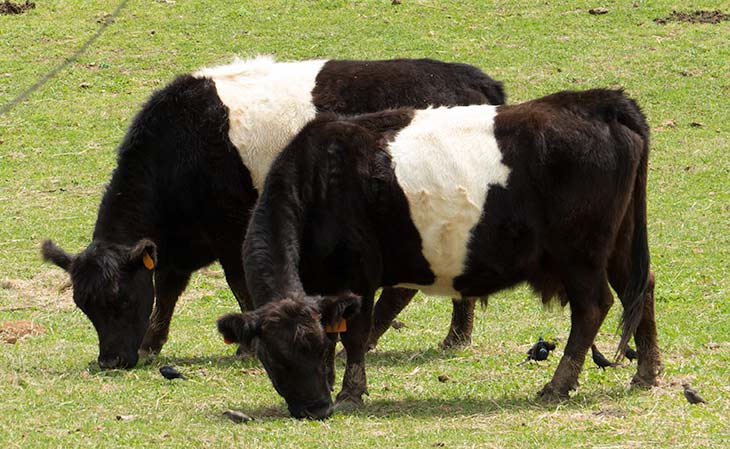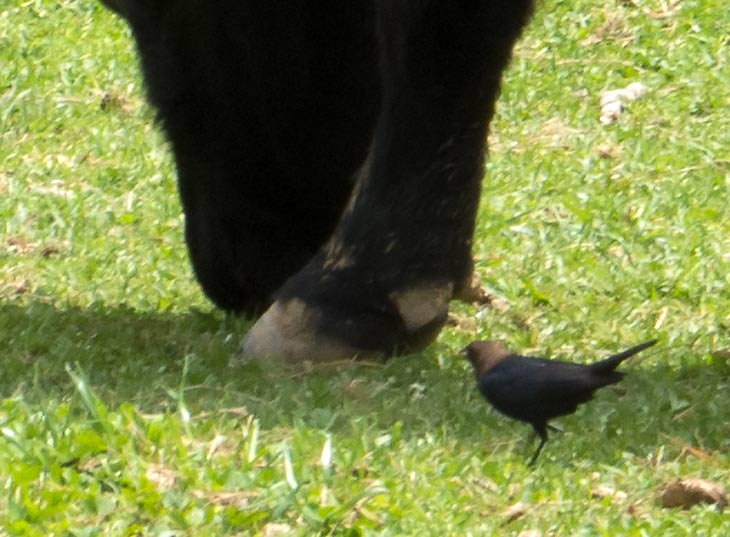We went for a drive recently and saw these striking Belted Galloway cows, a breed imported to the U.S. in the late 1940’s from the Western side of Southern Scotland (a region called Galloway). In the U.S. they are sometimes called “Oreo” cows because of the resemblance of their color pattern to the famous cookie. The Belted form probably arose from a cross of the all-black Galloway breed of cows with the Dutch Belted breed. They are mainly raised for beef or, in the U.S., as a novelty.
Belted Galloway cows are very hardy and naturally polled (they have no horns). A very thick and velvety undercoat plus numerous long guard hairs insulate them well from cold and rain. They do very well on poor pastures, unlike most other popular breeds.
Several birds can be seen near the cattle’s feet catching any insects the cows flushed. They are, appropriately enough, Cowbirds (Molothrus ager), and they often follow cattle around in this manner. These are Brown-headed Cowbirds, and they are brood parasites (they lay their eggs in other bird’s nests). It is possible that Cowbirds evolved the ability to get other birds to take care of their young, because they had to follow grazing animals to procure food. Thus they could not stay in one place to take care of young. In the photograph below, the male Cowbird’s brown head can be clearly seen.



Gary,
Kemp ’em coming. Your productivity puts me to shame. Of course, there are plenty of brood parasites for which that explanation does not hold. Why waste time rearing young when you can get foster parents to do so of another species. Reproductive productivity might even be enhanced. Do Cowbird females effectively generate more youngsters by this behaviour than they could be expected to rear by themselves – with the help of a male?
Bristol Birder.